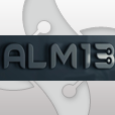new for repacking work.
Hi,
I m new for repacking work.can any one explain about following question???
1)what is DLL???
2)what is assembly DLL????
3)what is COM??? and COM DLL???
4)How to register the EXE???
5)How to unregister the EXE????
I m new for repacking work.can any one explain about following question???
1)what is DLL???
2)what is assembly DLL????
3)what is COM??? and COM DLL???
4)How to register the EXE???
5)How to unregister the EXE????
0 Comments
[ + ] Show comments
Answers (15)
Please log in to answer
Posted by:
Hussi
13 years ago
Posted by:
anonymous_9363
13 years ago
Posted by:
jmaclaurin
13 years ago
Posted by:
Arminius
13 years ago
Posted by:
icbrkr
13 years ago
Posted by:
Arminius
13 years ago
Zain: I've used this site for a while as a reader and have finally decided to contribute. One thing I've seen is that the folks are happy to help out, but you'll need to do some basic research yourself before posting. Failure to do so will get you berated or embarassed publicly and will get a rise out of the more experienced Super Members.
That said, I'm politely advising you to use Google. I'm guessing English is not your first language - I know that Google is available in German with results in German; hopefully that will be available in your language as well.
Good luck.
That said, I'm politely advising you to use Google. I'm guessing English is not your first language - I know that Google is available in German with results in German; hopefully that will be available in your language as well.
Good luck.
Posted by:
pjgeutjens
13 years ago
Posted by:
mpk1231
13 years ago
DLL nothing but dynamic link library
Dynamic link library, a collection of subroutines stored on disk, which can be loaded into memory and executed when accessed by a running program
A DLL is a library that contains code and data that can be used by more than one program at the same time. For example, in Windows operating systems, the Comdlg32 DLL performs common dialog box related functions. Therefore, each program can use the functionality that is contained in this DLL to implement an Open dialog box. This helps promote code reuse and efficient memory usage.
By using a DLL, a program can be modularized into separate components. For example, an accounting program may be sold by module. Each module can be loaded into the main program at run time if that module is installed. Because the modules are separate, the load time of the program is faster, and a module is only loaded when that functionality is requested.
Additionally, updates are easier to apply to each module without affecting other parts of the program. For example, you may have a payroll program, and the tax rates change each year. When these changes are isolated to a DLL, you can apply an update without needing to build or install the whole program again.
The following list describes some of the files that are implemented as DLLs in Windows operating systems:
* ActiveX Controls (.ocx) files
An example of an ActiveX control is a calendar control that lets you select a date from a calendar.
* Control Panel (.cpl) files
An example of a .cpl file is an item that is located in Control Panel. Each item is a specialized DLL.
* Device driver (.drv) files
An example of a device driver is a printer driver that controls the printing to a printer.
Dynamic link library, a collection of subroutines stored on disk, which can be loaded into memory and executed when accessed by a running program
A DLL is a library that contains code and data that can be used by more than one program at the same time. For example, in Windows operating systems, the Comdlg32 DLL performs common dialog box related functions. Therefore, each program can use the functionality that is contained in this DLL to implement an Open dialog box. This helps promote code reuse and efficient memory usage.
By using a DLL, a program can be modularized into separate components. For example, an accounting program may be sold by module. Each module can be loaded into the main program at run time if that module is installed. Because the modules are separate, the load time of the program is faster, and a module is only loaded when that functionality is requested.
Additionally, updates are easier to apply to each module without affecting other parts of the program. For example, you may have a payroll program, and the tax rates change each year. When these changes are isolated to a DLL, you can apply an update without needing to build or install the whole program again.
The following list describes some of the files that are implemented as DLLs in Windows operating systems:
* ActiveX Controls (.ocx) files
An example of an ActiveX control is a calendar control that lets you select a date from a calendar.
* Control Panel (.cpl) files
An example of a .cpl file is an item that is located in Control Panel. Each item is a specialized DLL.
* Device driver (.drv) files
An example of a device driver is a printer driver that controls the printing to a printer.
Posted by:
mpk1231
13 years ago
Posted by:
jmcfadyen
13 years ago
 Rating comments in this legacy AppDeploy message board thread won't reorder them,
Rating comments in this legacy AppDeploy message board thread won't reorder them,so that the conversation will remain readable.








